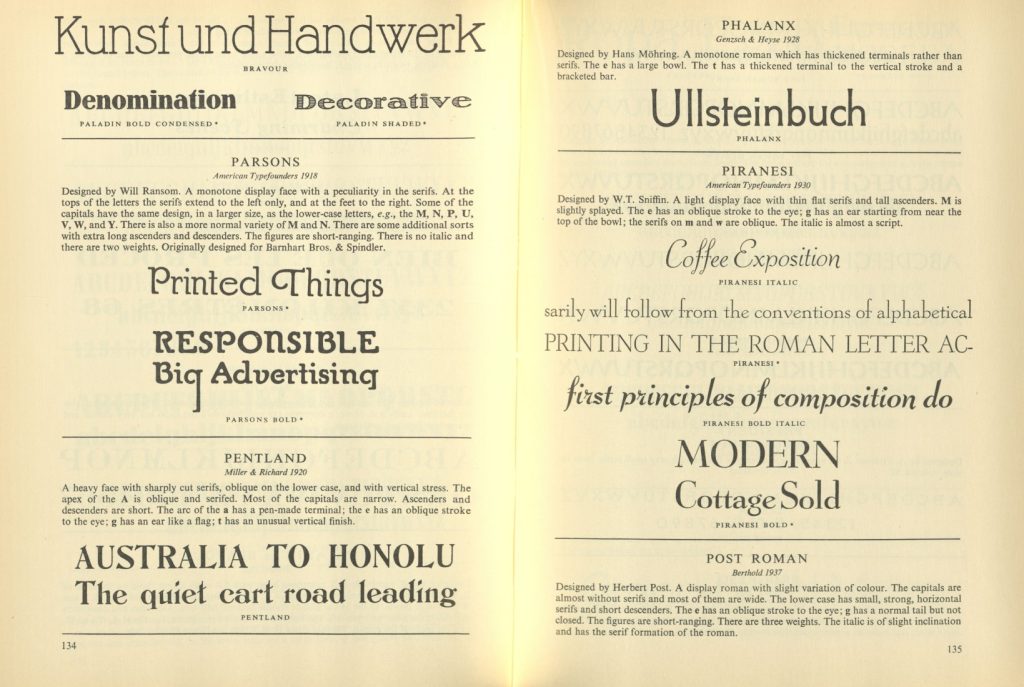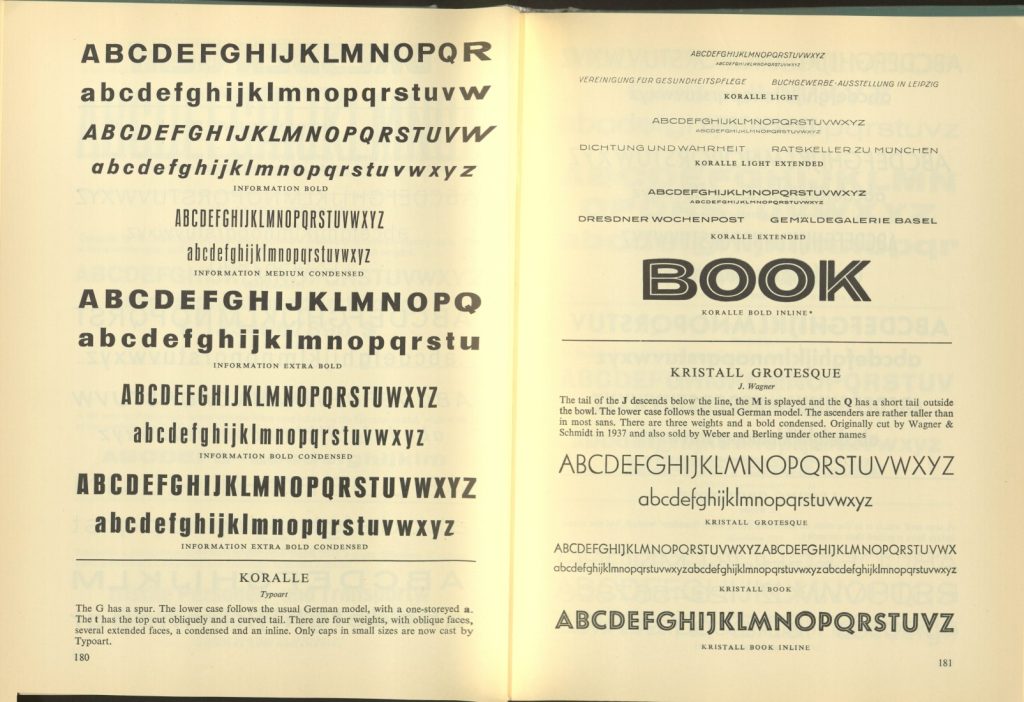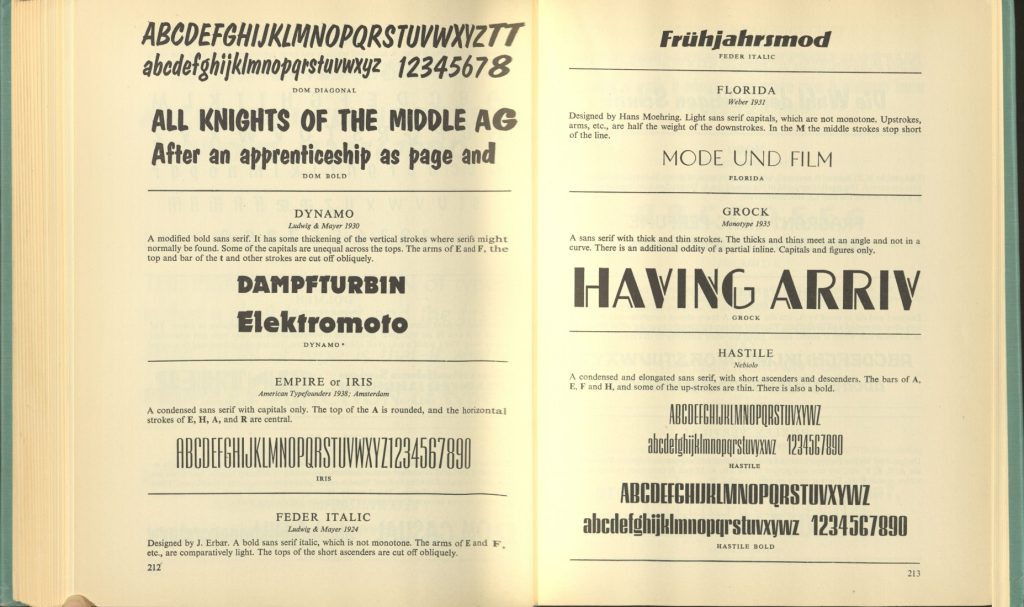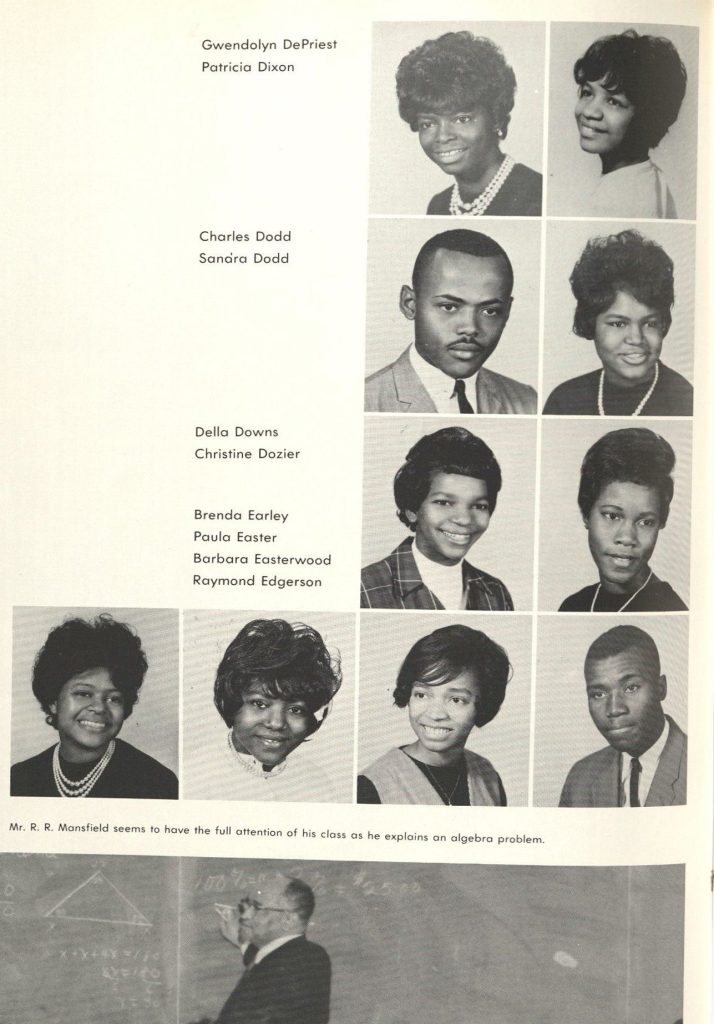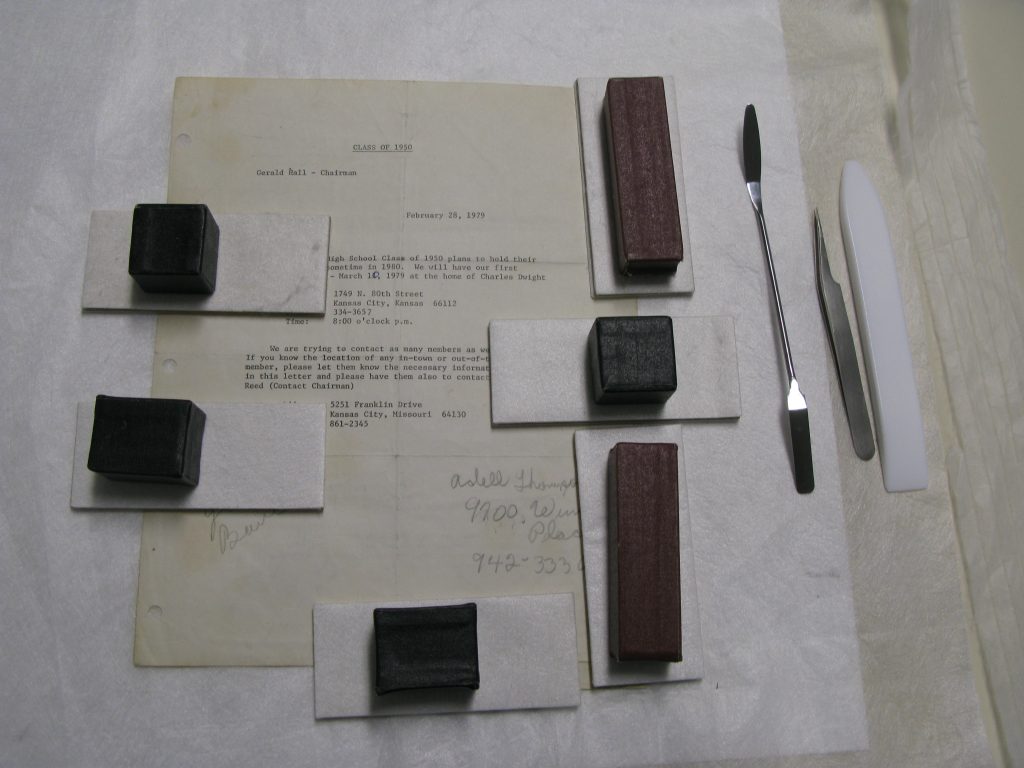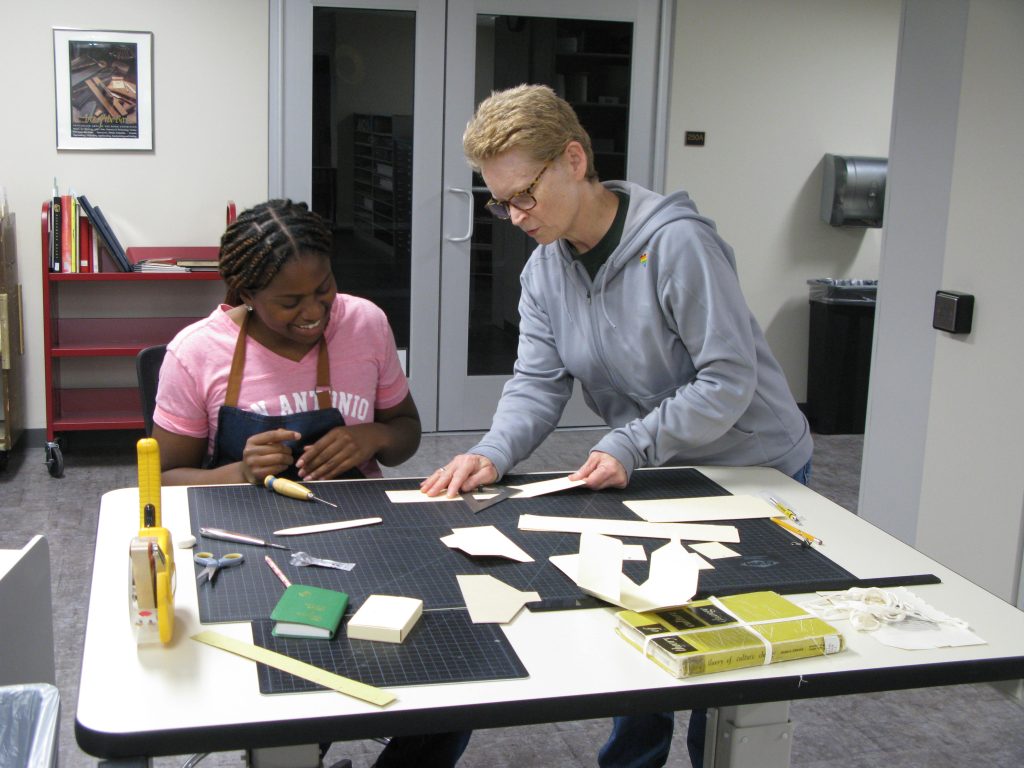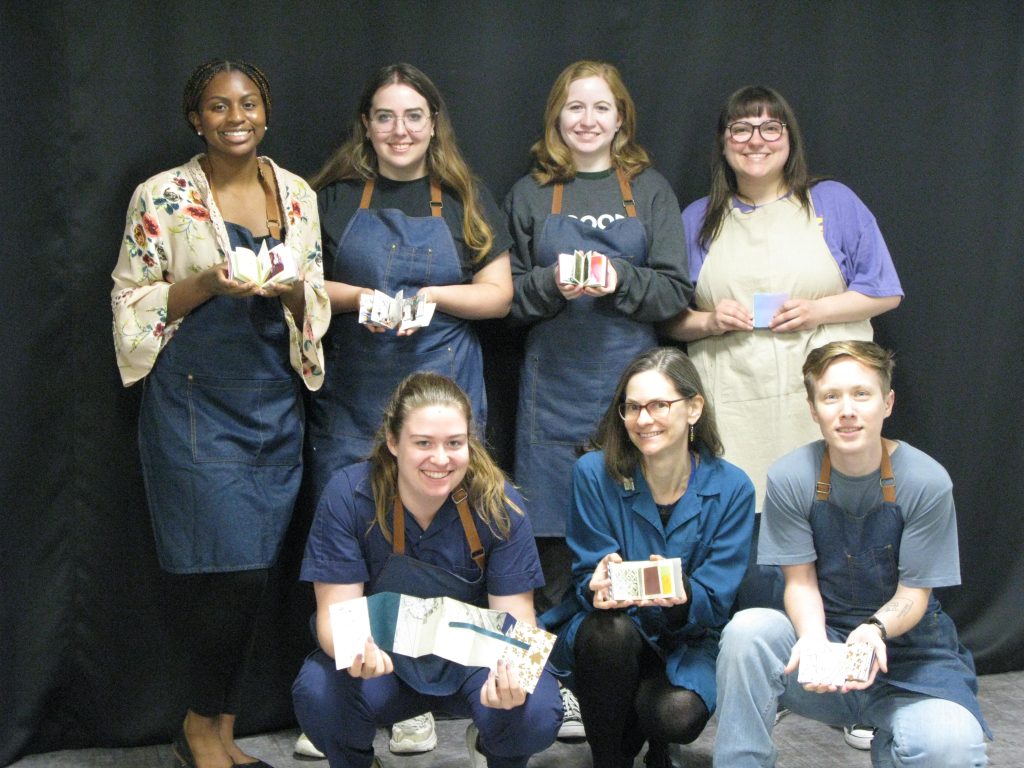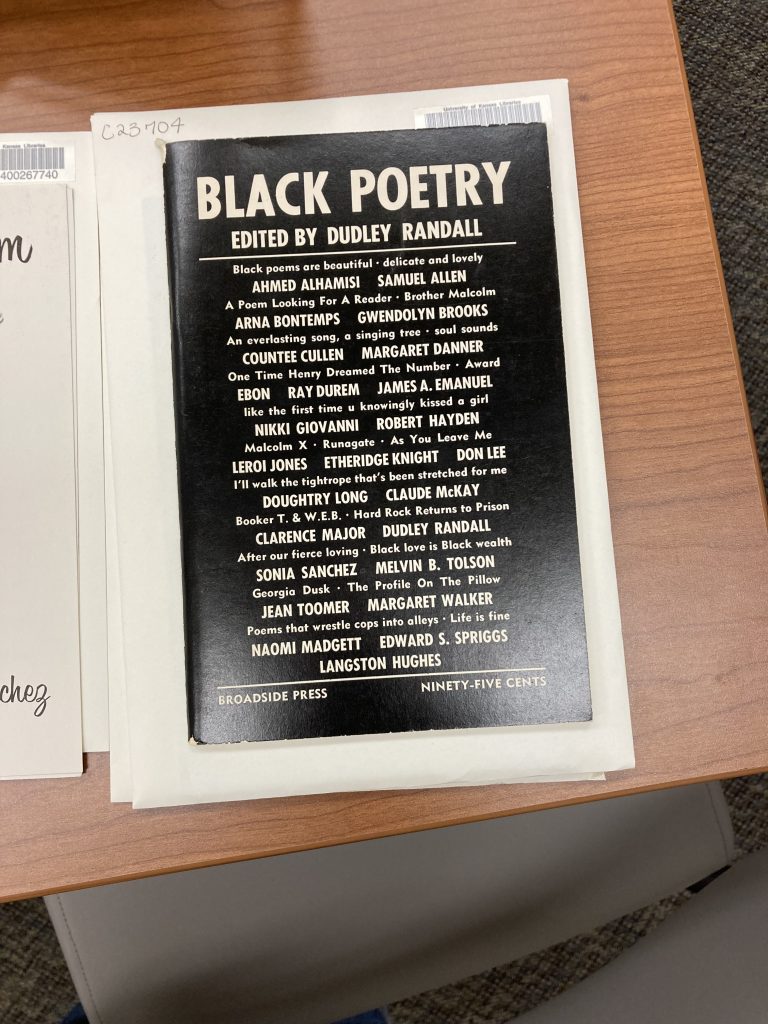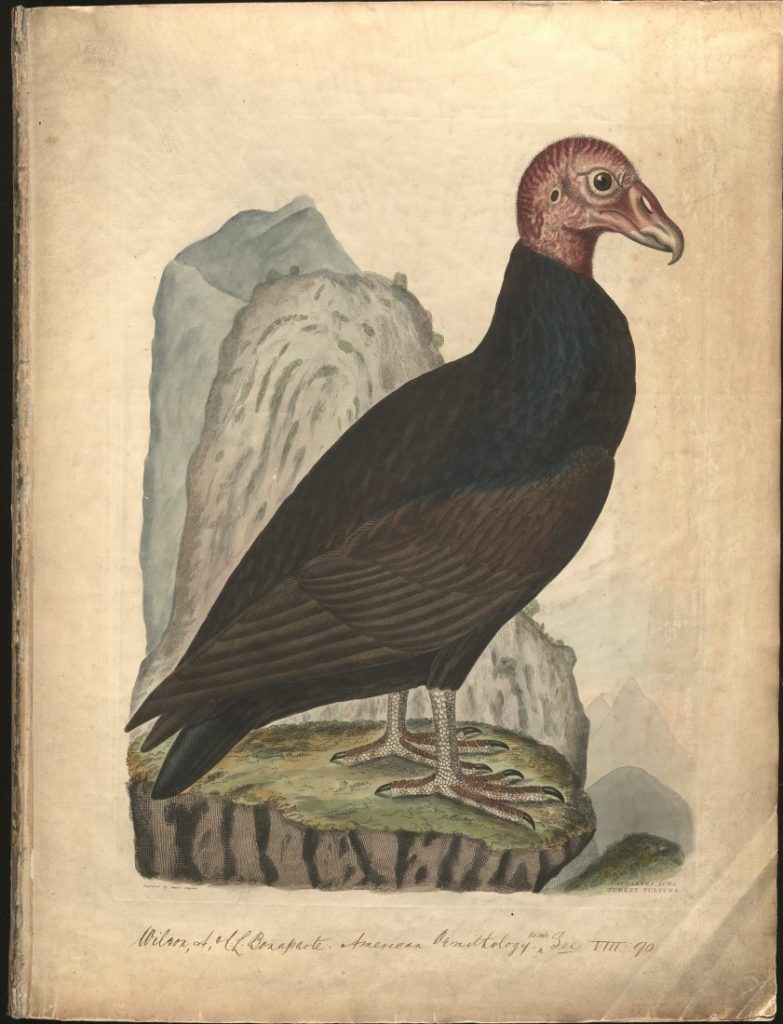That’s Distinctive!: Typefaces
August 4th, 2023Check the blog each Friday for a new “That’s Distinctive!” post. I created the series because I genuinely believe there is something in our collections for everyone, whether you’re writing a paper or just want to have a look. “That’s Distinctive!” will provide a more lighthearted glimpse into the diverse and unique materials at Spencer – including items that many people may not realize the library holds. If you have suggested topics for a future item feature or questions about the collections, feel free to leave a comment at the bottom of this page.
This week on That’s Distinctive! we share The Encylopaedeia of Type Faces. Written by W. Turner Berry, A. F. Johnson, and W. Pincus Jaspert, the 358-page book was first published in 1953 and reissued in this revised and expanded edition in 1958. The book shares examples (or specimens) of typefaces.
According to Wikipedia, “A typeface (or font family) is a design of letters, numbers and other symbols, to be used in printing or for electronic display.” Many typefaces come with variations of size, weight, slope, and width. Each variation of a typeface (roman, italic, bold, etc.) might be considered a font, within the larger font family. A more in-depth discussion of typefaces and fonts can be found on Wikipedia.
The introduction of the volume explains its purpose:
“This selection of type faces has been compiled to provide a reference book for all those who use type — typographers, printers, publishers, advertisement designers and the business man who takes some interest in the choice of type for his stationery and publicity. It may also be of value to the lettering artist, the signwriter, and the engraver, who in consequence of the limitations of their own books of alphabets, often turn–we trust with a little uneasiness of conscience–to printers’ type for inspiration.”
I found this book simply by walking through the stacks, and I stopped because the title sounded interesting. Come to find out, the book is exactly what the title says. It shares hundreds of typefaces – organized into categories – throughout its pages, which is super fascinating. I’m sharing just a few pages this week, but the entire book can be viewed at the library.
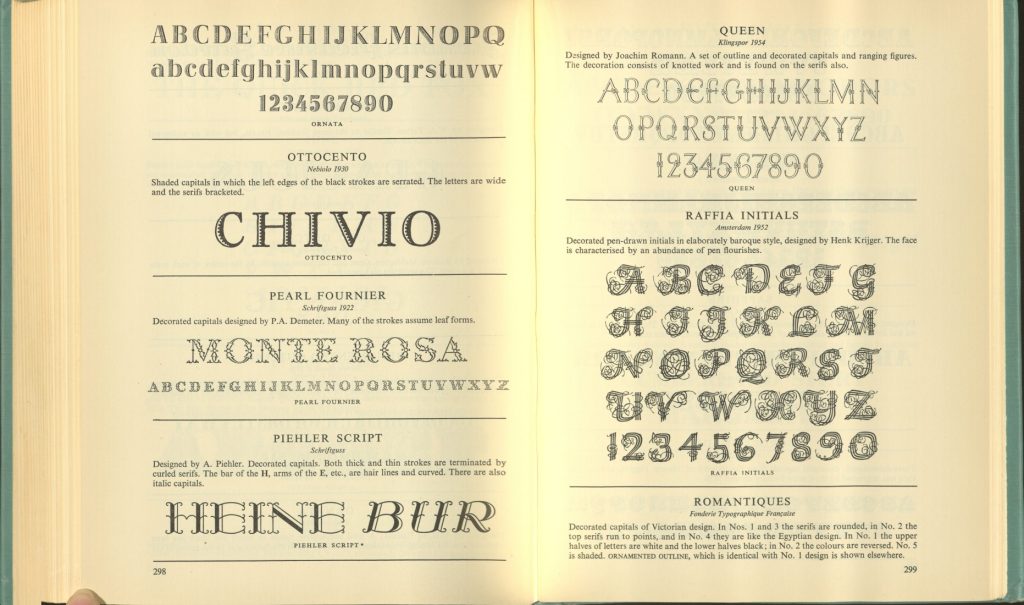
Tiffany McIntosh
Public Services

